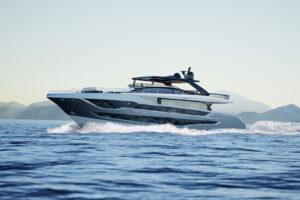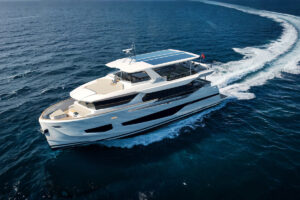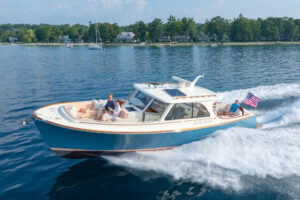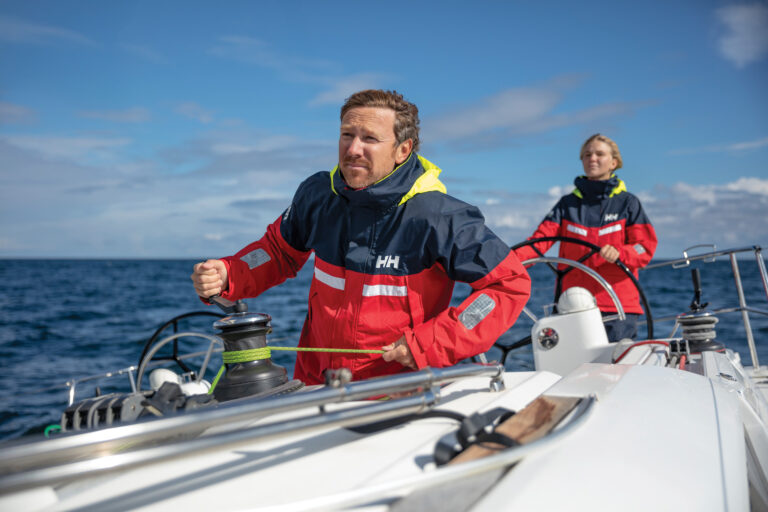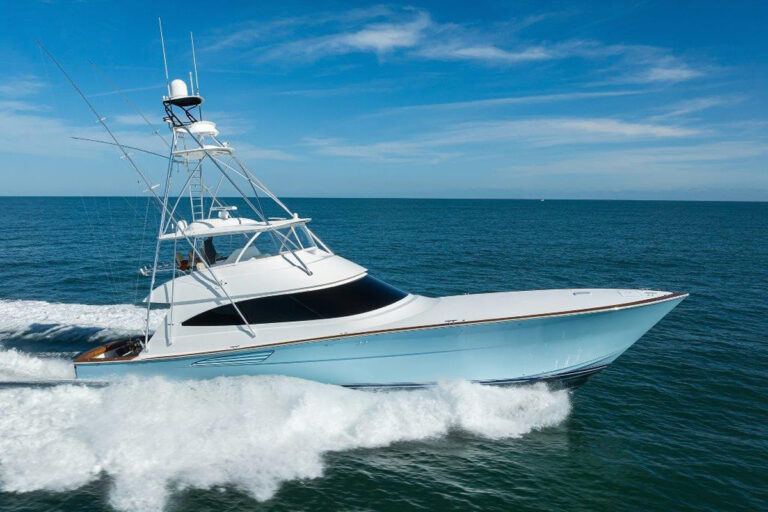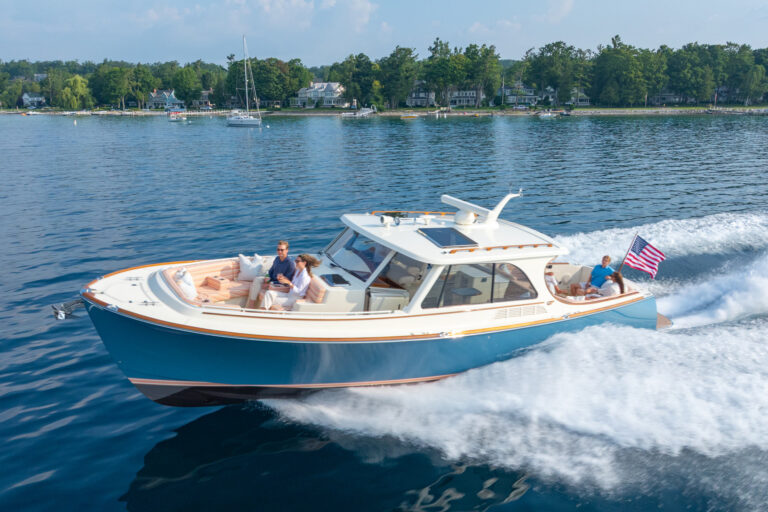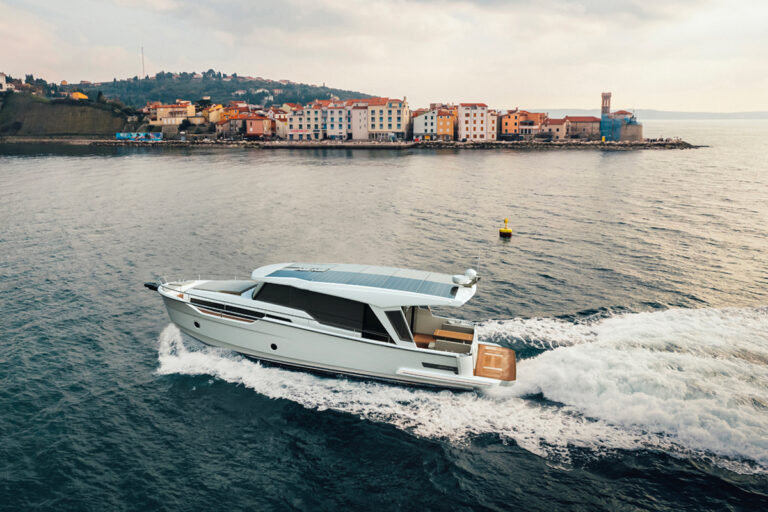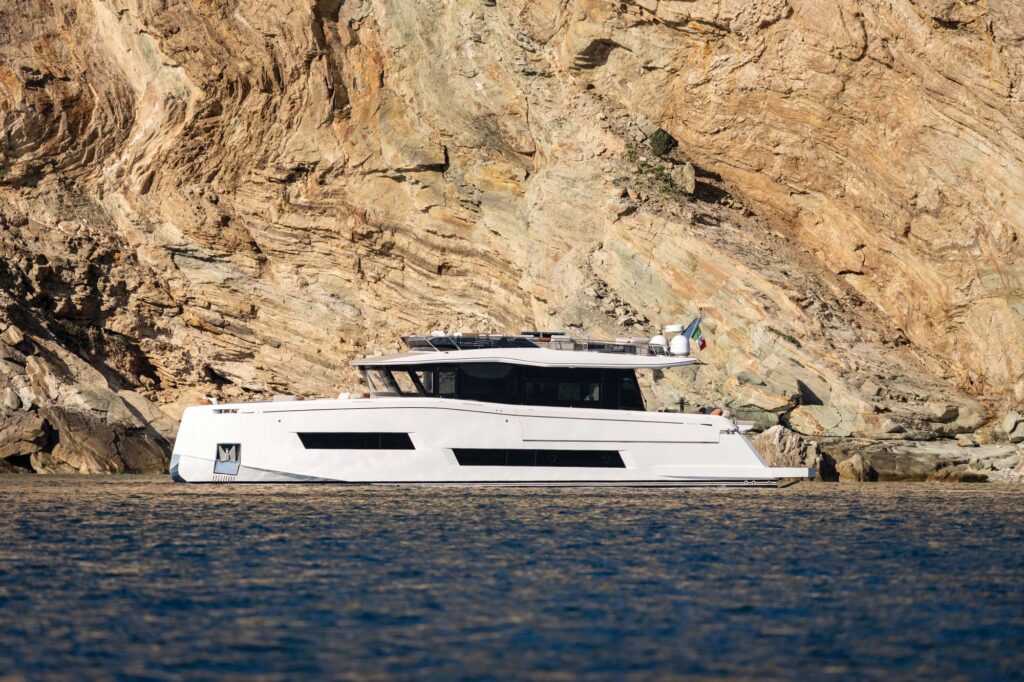
Vintners call it terroir. It’s the complete natural environment in which a particular wine is produced, encompassing the soil, the topography and the climate. Each element helps to shape the character of the final product. The same could be said of Pardo Yachts, the Italian shipyard whose vessels consistently reflect the sharp lines and striking interiors that define “Made in Italy.”
Pardo’s 72-footer is the second and larger model in the builder’s Endurance class, building on the success of the Endurance 60. For the E72, Pardo partnered with BurdissoCapponi Yachts and Design Studio on the interior and decor—and it shows. The vessel I stepped aboard, which had just made its North American debut at the Palm Beach International Boat Show, was docked side-to in downtown Miami. The starboard-side glass doors and windows were open, and the portside bulwark was folded down. The vessel seemed to meld the interior and exterior entertainment areas into one.
And just as Italian supercars are notably famous for their sleek lines, the Pardo has a reverse bow and superstructure lines that complement the inward-raked Portuguese bridge and sweeping curved glass at the helm.
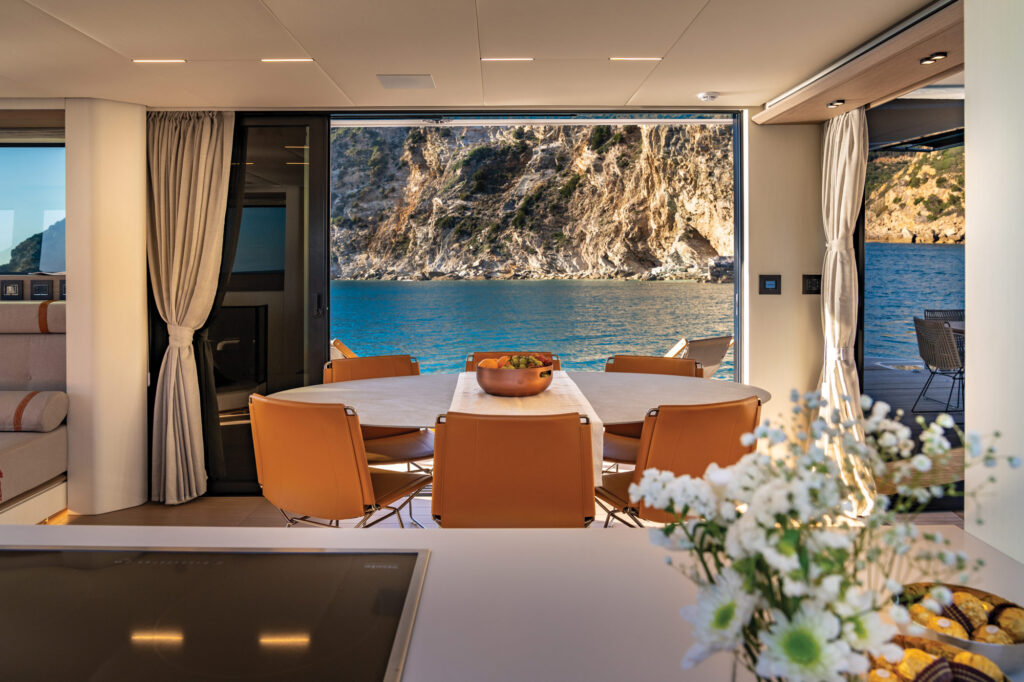
At the stern, guests can opt for lounging and sunbathing or alfresco dining, just steps away from the yacht’s aft-galley layout. The stern garage is able to house a tender up to 12 feet in length with a launch and retrieval system, and with a hydraulic swim platform that should help to make those shoreside jaunts a snap. Fold-down bulwarks add some 180 square feet of real estate to the aft deck at anchor. The composite teak deck material kept things cool underfoot while I was aboard. It was attractive and, I was told, nearly maintenance-free as well.
The entrance forward is via glass doors, with the galley immediately to port and a movable eight-place dining table on the starboard side. To gain that sense of inside meets outside, the yacht’s starboard-side sole-to-ceiling glass doors open the after third of the salon, which has 83 inches of headroom. There are options for oak or walnut interiors, with corresponding fixtures and soft goods. (This Pardo had the matte-finish walnut, which I found strikingly beautiful.)
The designers also seem to have put considerable thought into the layout of the Endurance 72’s staterooms. The master and VIP, along with the day head, are accessed via a spiral staircase on the port side of the salon, forward of the galley. Italian style is present belowdecks as well, with pops of color contrasting with black fixtures throughout the spaces. The guest staterooms are just past the helm and down a few steps moving forward, each with twin berths. By separating the two primary guest overnight areas, the convenience and privacy factors go way up. There’s also crew quarters accessible from a private hatch in the bow.
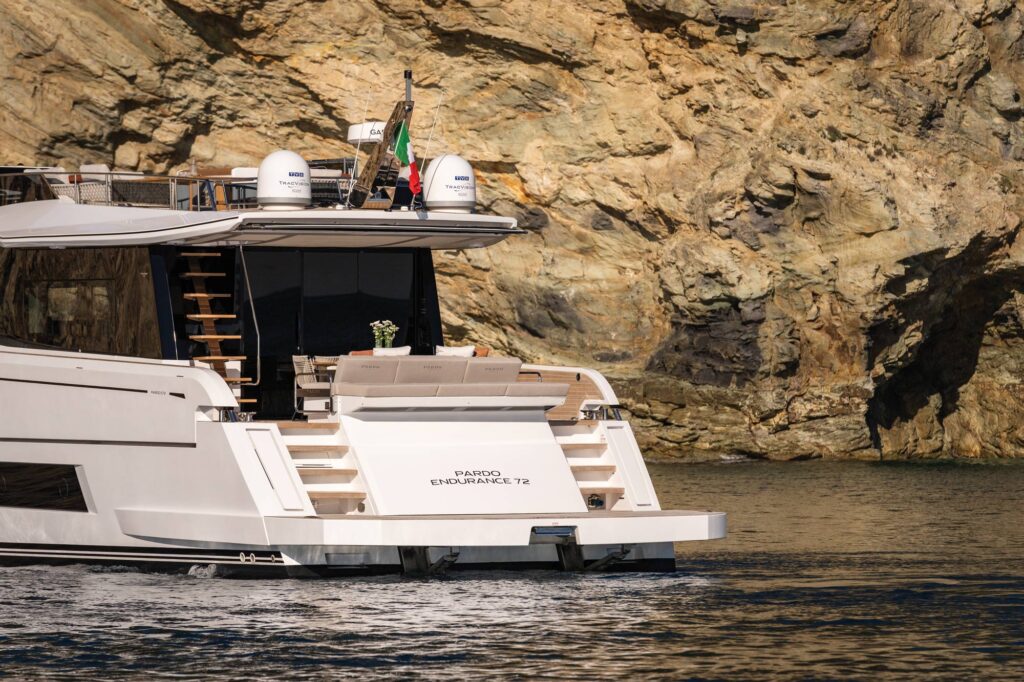
The lower helm has a pair of Garmin 22-inch multifunction displays. A pantograph door offers easy access to the bow, thanks in part to the Pardo’s 24-inch-wide side decks. But, weather permitting, I would consider the flybridge as the ideal place to operate this vessel.
Eight steps up from the cockpit are an open-air teppanyaki grill, wine chiller, wet bar, and seating for 10 around an L-shaped couch with a table. The sun bed aft is also an option for guests to land a few extra rays while underway or on the hook. The lightweight, louvered T-top keeps the rest of the helm area comfortably shaded.
Davide Leone Yacht Design worked with Pardo on engineering to take full advantage of IPS propulsion. The 72’s warped hull design uses computational fluid dynamics studies to create a progressively decreasing deadrise from bow to stern. The builder says this shape helps to give the vessel its steady ride, even in rough seas.
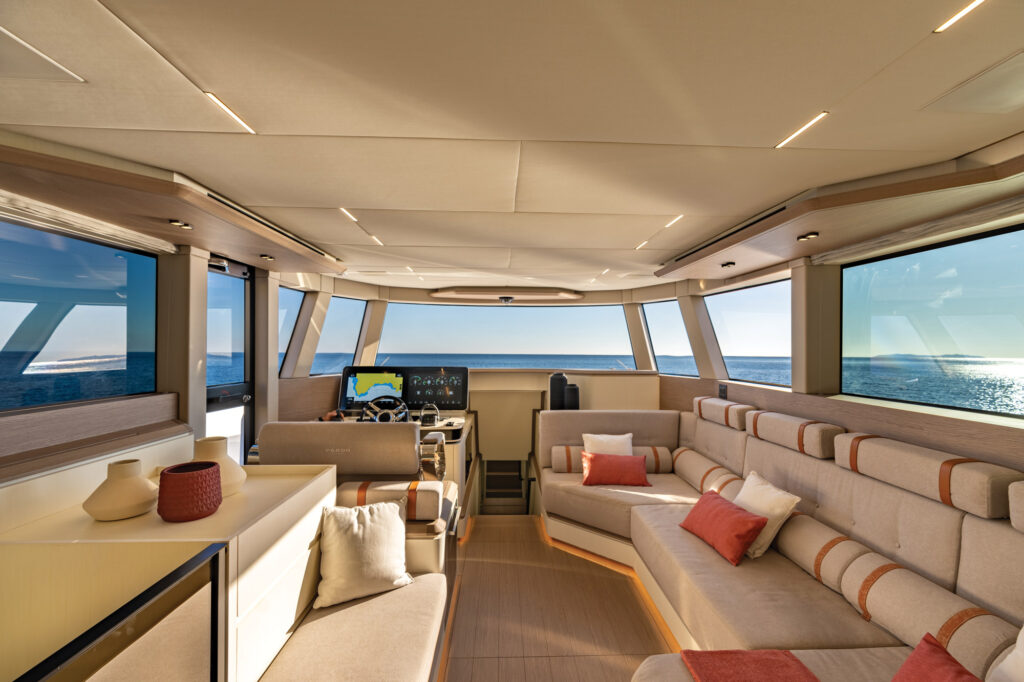
There are two power packages available: the standard Volvo Penta D13 IPS1050s and the optional IPS1350s, which powered the vessel I was aboard.
We put the 72 through its paces on a windblown Biscayne Bay, running into and against a stiff 20-knot northeast breeze and confused 2- to 4-foot seas. With a crew of six and 950 gallons of fuel, the yacht cruised easily at 24 knots while the diesels burned 77 gallons per hour at 2,270 rpm and 75 percent engine load. Dialing it back to 20 knots, the fuel burn was 63 gph, good for a range of 453 nautical miles with a 10 percent reserve. Slowing to a long-range cruising speed of 10 knots, the range is more than 900 miles, thanks in part to the vessel’s hefty fuel capacity of 1,585 gallons. And despite the challenging conditions, we also saw a real-world top speed of 26.7 knots, proof that the big Pardo can gallop when needed.
Handling was sure-handed and smooth, even when quartering into the wind and seas, with surprisingly little spray thrown from the bow, and none even reaching the windshield at the lower helm. The Quick gyrostabilizer helped keep things at an even keel, especially when idling beam-to in the sloppy conditions.
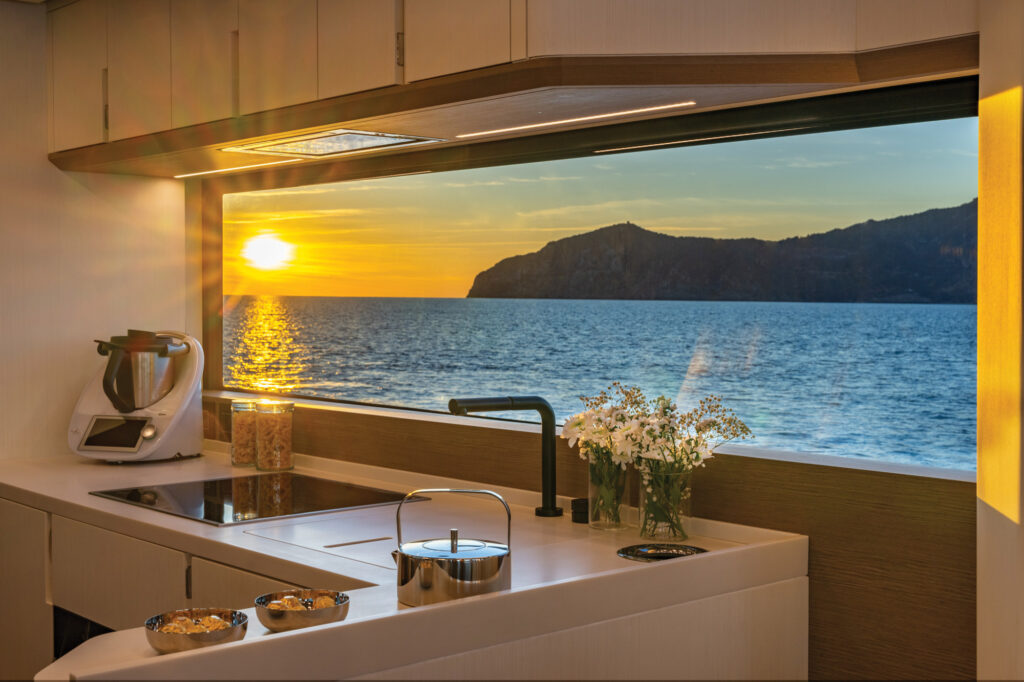
The 72 is quiet as well, measuring just above normal conversation levels in the salon at cruising speed.
For those looking to connect with the natural world without giving up an inch of comfort—and to accomplish it all with that unmistakable Italian style—the Pardo Endurance 72 can keep the good times rolling for a very long time, indeed.
Looking Ahead
Pardo’s team designed the engine room of the Endurance 72 to accommodate future hybrid propulsion installations as the technology becomes available from Volvo Penta. The idea is to ensure the line remains relevant amid rapidly evolving propulsion systems.
Down in Front
At the bow, there’s a built-in forward-facing sofa and a central sun pad with cushions that are weighted to help them stay in place underway. A second, smaller sun pad is fully forward, with access to the vessel’s windlass and ground tackle beneath it.
Take the next step: pardoyachts.com

